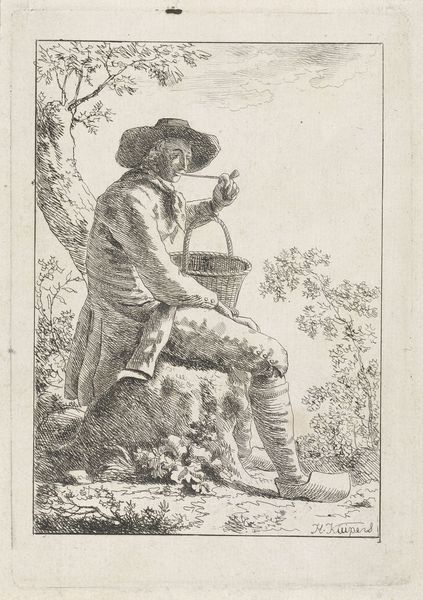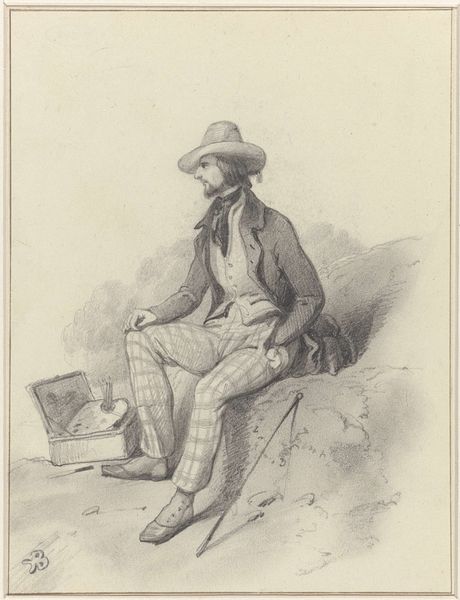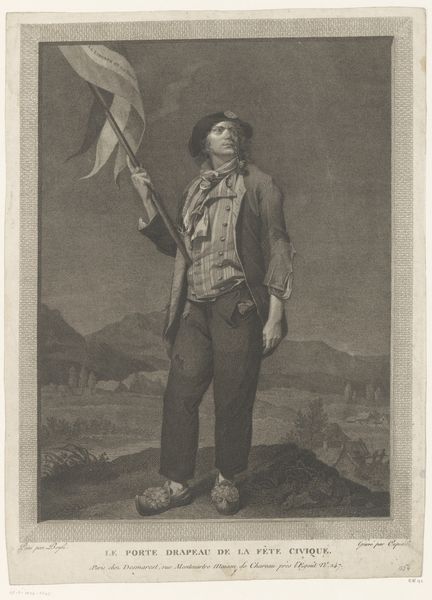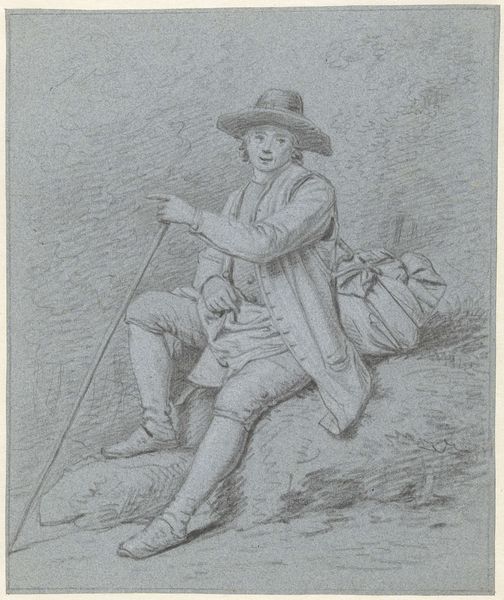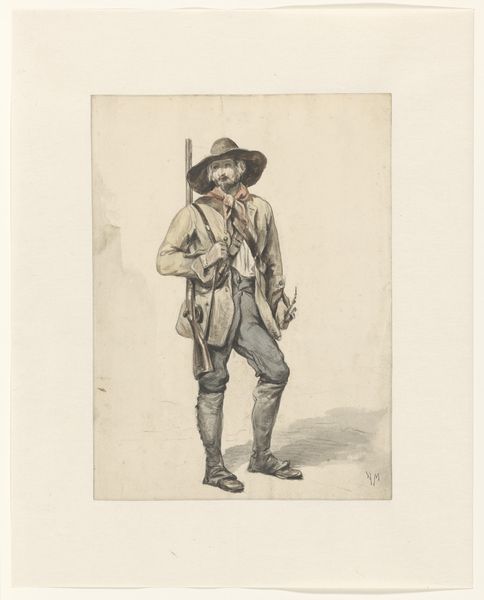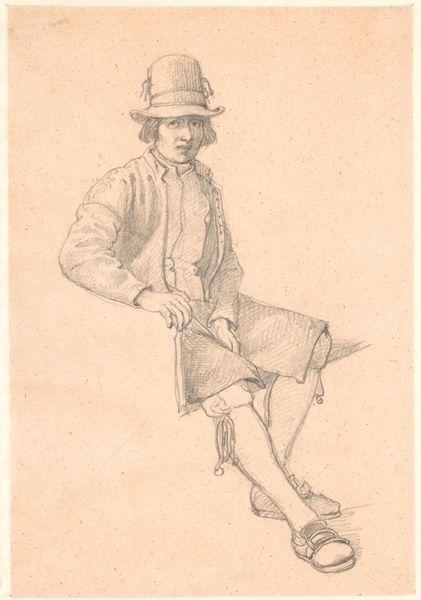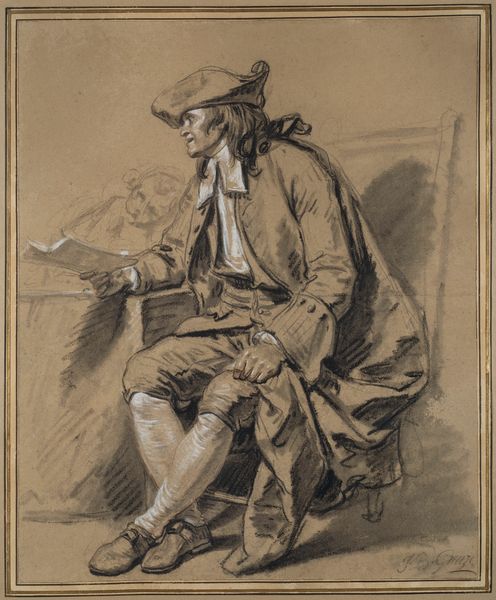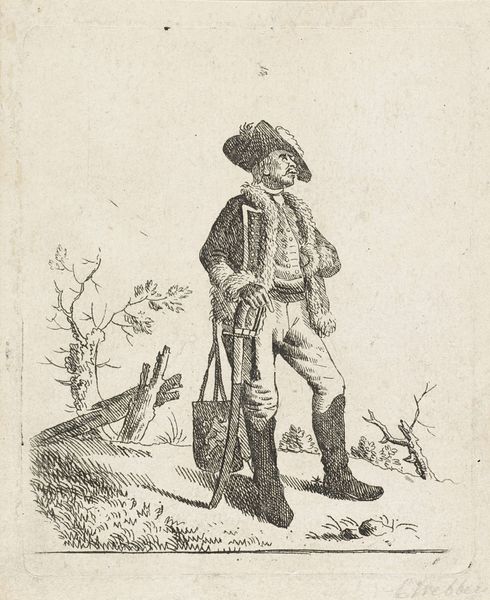
drawing, print, etching, pencil
#
portrait
#
pencil drawn
#
drawing
# print
#
etching
#
landscape
#
pencil drawing
#
romanticism
#
pencil
#
genre-painting
#
history-painting
#
academic-art
Dimensions: Sheet: 14 5/8 × 9 1/2 in. (37.1 × 24.1 cm)
Copyright: Public Domain
Editor: This drawing, "Plein Air Painter at an Easel," created sometime between 1780 and 1830, depicts an artist working outdoors. It's striking how elegantly dressed he is for the occasion! What social messages can we decode from such a representation of landscape painting? Curator: That's a great observation! The artist's attire, contrasting with the rugged outdoors, speaks volumes about the evolving social status of art and artists. During this period, the act of painting landscapes "en plein air" wasn't merely about capturing nature; it was becoming a signifier of cultivated taste and leisure among the elite. Do you notice how this elevates landscape art beyond simple documentation? Editor: Definitely! It suggests that landscape painting had become fashionable. Were artists like this trying to legitimize their place within the academic art world through their choice of subject and dress? Curator: Precisely. There was a push to imbue landscape with historical or moral weight, aligning it with established genres like history painting. This self-portrait, in a way, stages the artist as a gentleman, intellectually and financially equipped to engage with nature as a subject worthy of study and interpretation. Look closely at his posture and expression - what does that communicate to you? Editor: I see a self-assuredness, a claim to a certain social standing. It's like he's asserting that artists are not just craftsmen, but refined individuals. Curator: Indeed. It highlights the shifting dynamics within the art world. Public perception of art and who makes it matters significantly. Examining art involves understanding that interplay. This piece highlights how social aspirations could be woven into the very fabric of art making. Editor: I never thought about plein air painting this way, as a sort of social performance! Curator: It reveals so much about how artists were maneuvering for status. Studying art from that perspective shows its crucial public role.
Comments
No comments
Be the first to comment and join the conversation on the ultimate creative platform.
